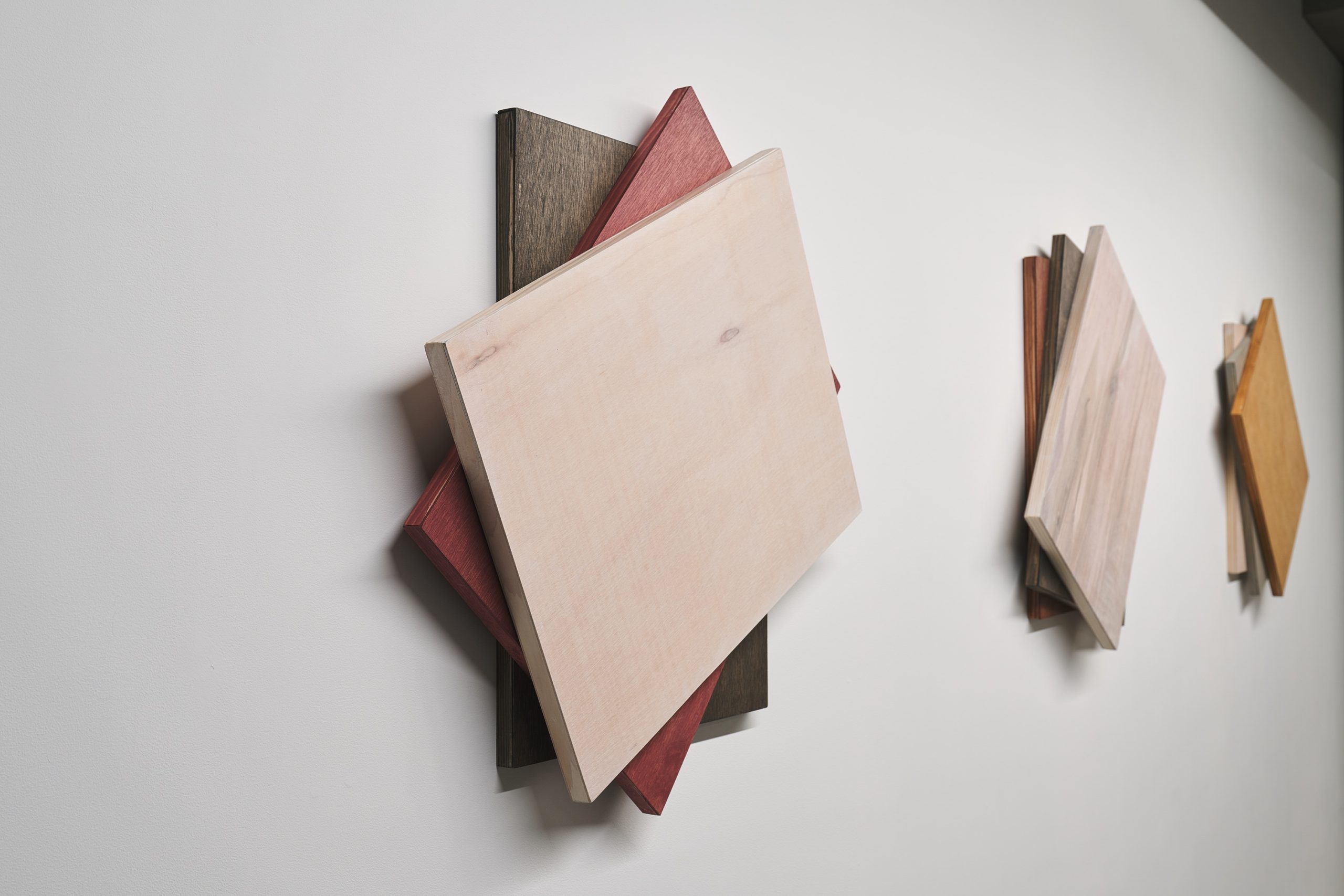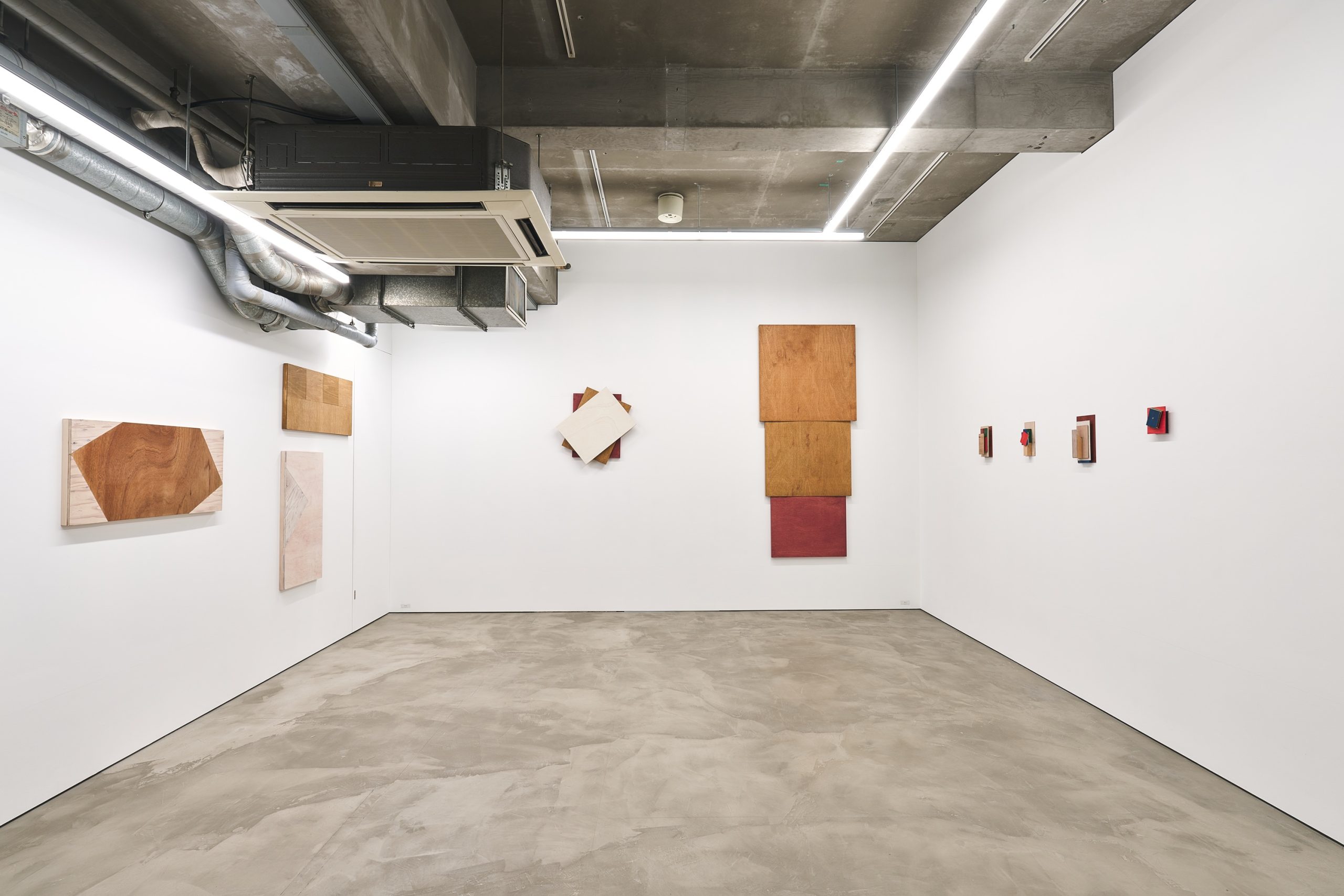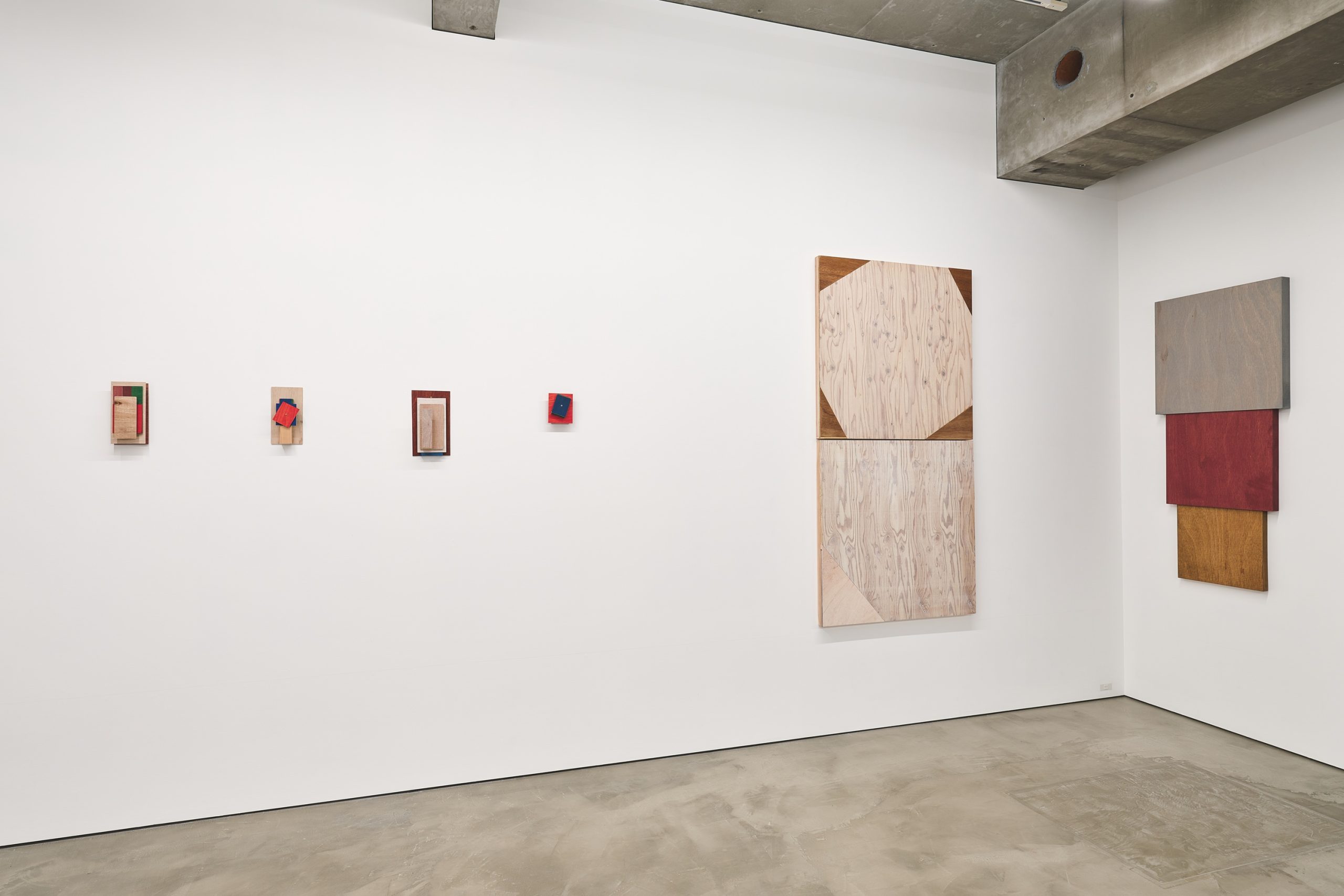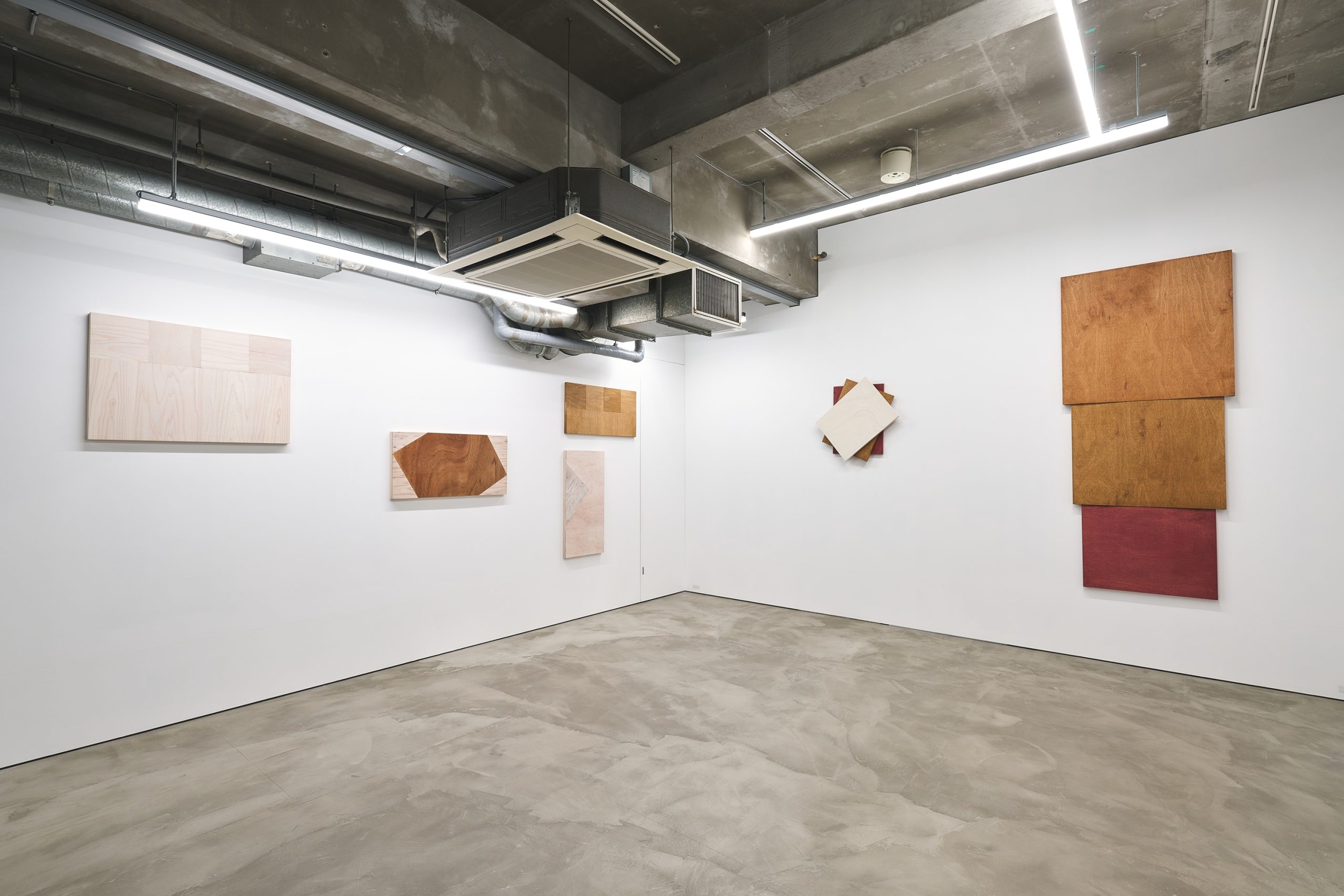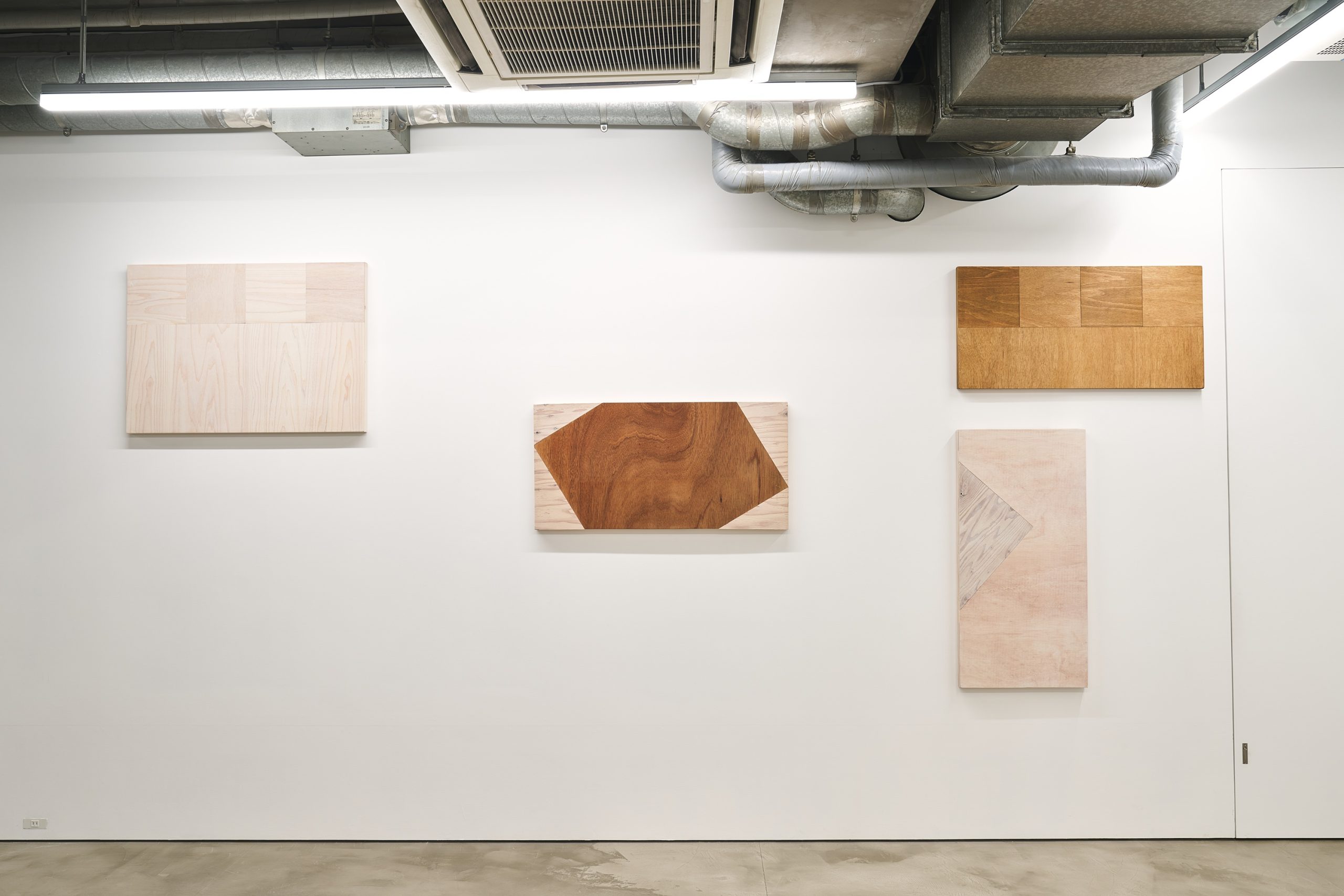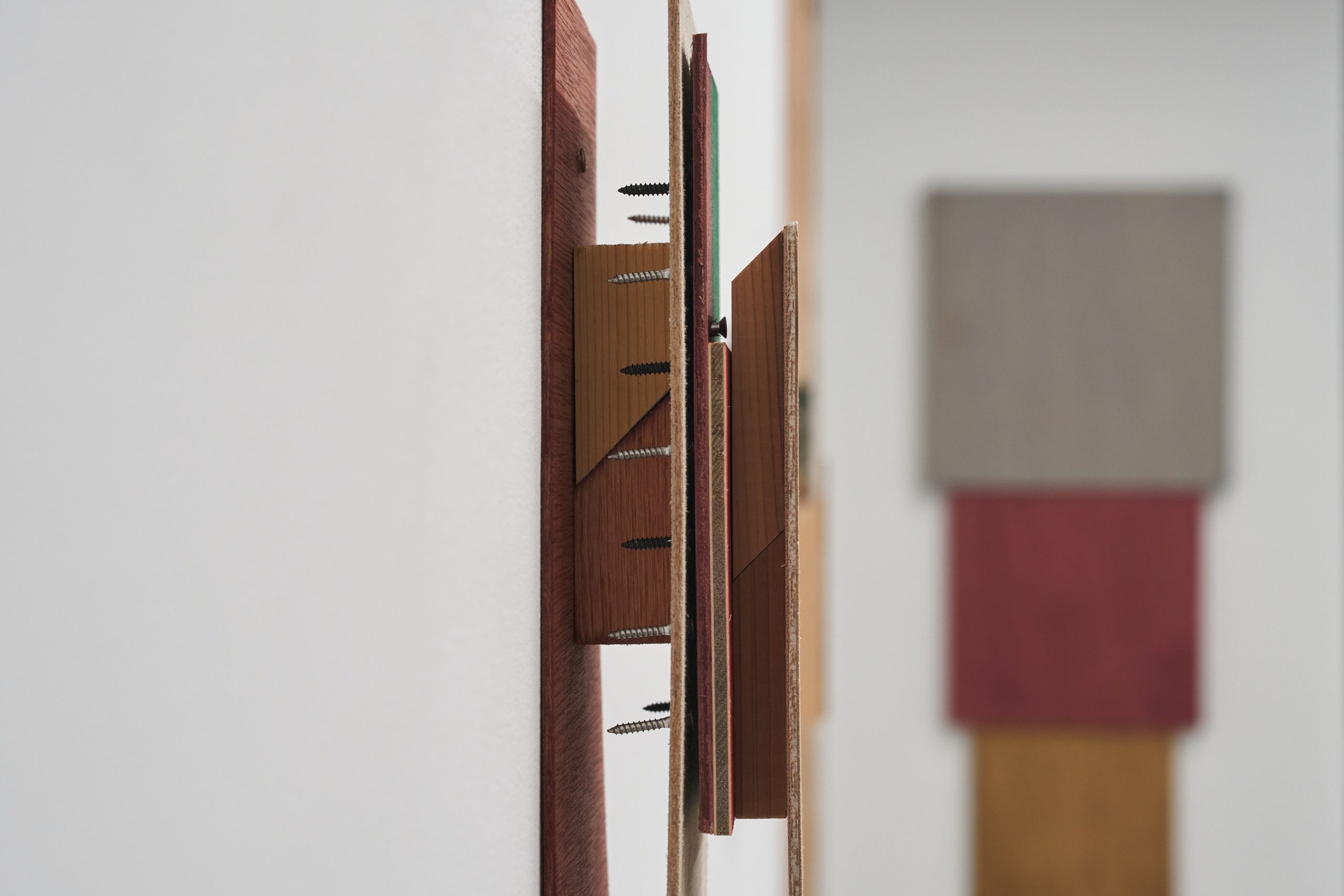Exhibition
Yasuko TOYOSHIMA : Geological age
January 22 - March 9, 2025
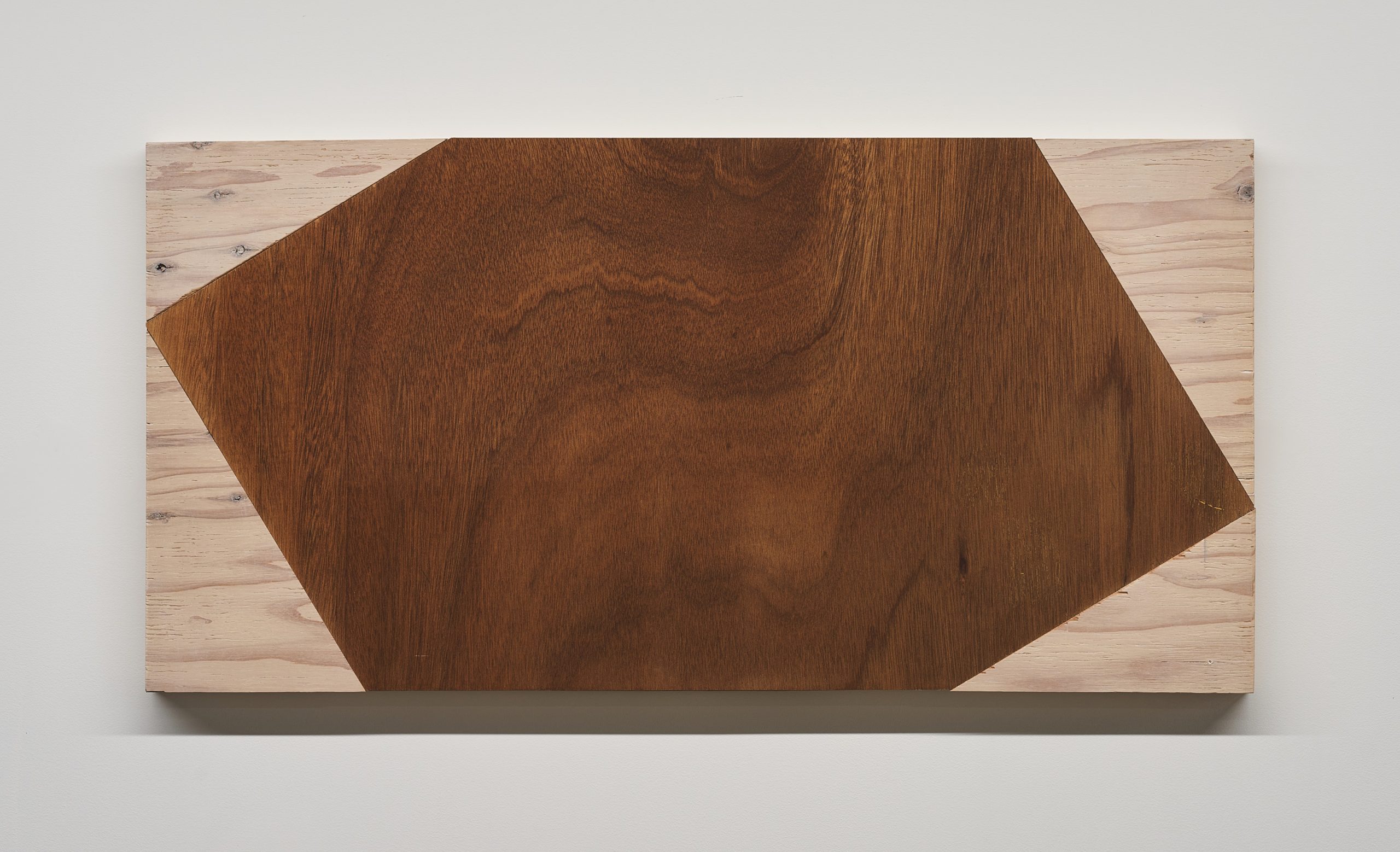
Neoarchean
2025
Natural paint, wood, linseed oil
45 x 91 x 4 cm
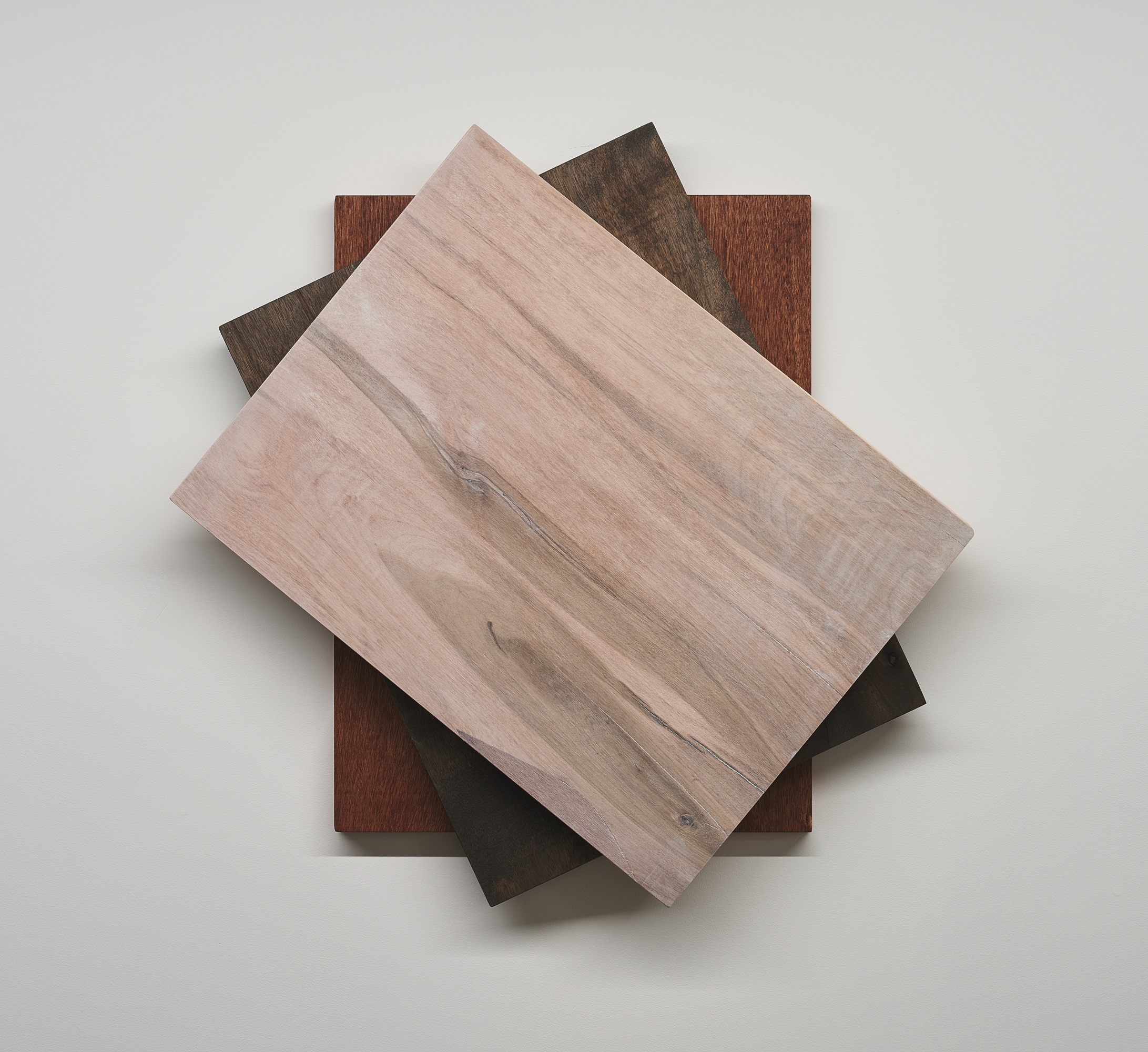
Helium
2025
Natural paint, wood
60 x 45 x 7.5 cm(variable)
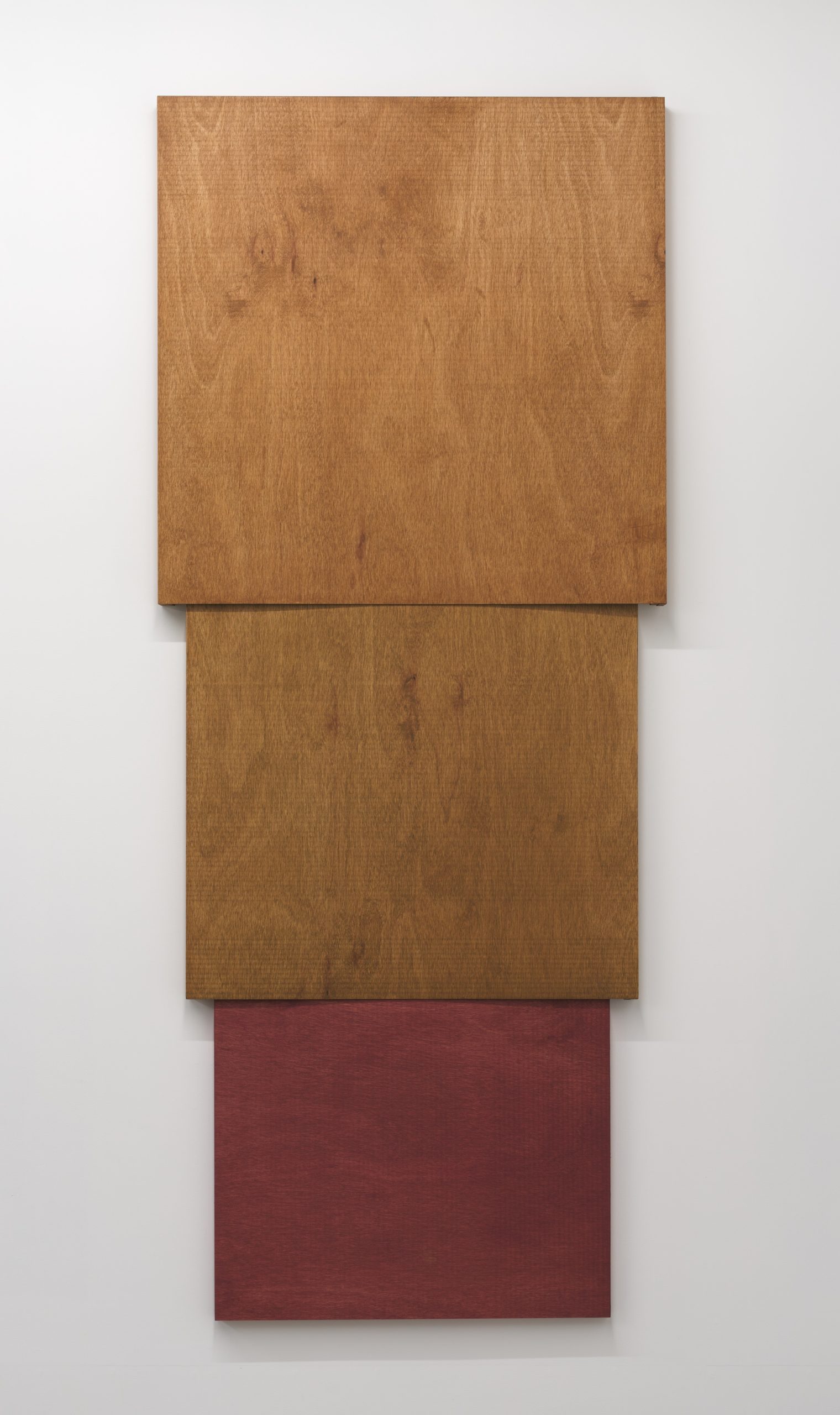
Tiberius
2025
Natural paint, wood
219.5 x 91 x 5.5 cm(variable)
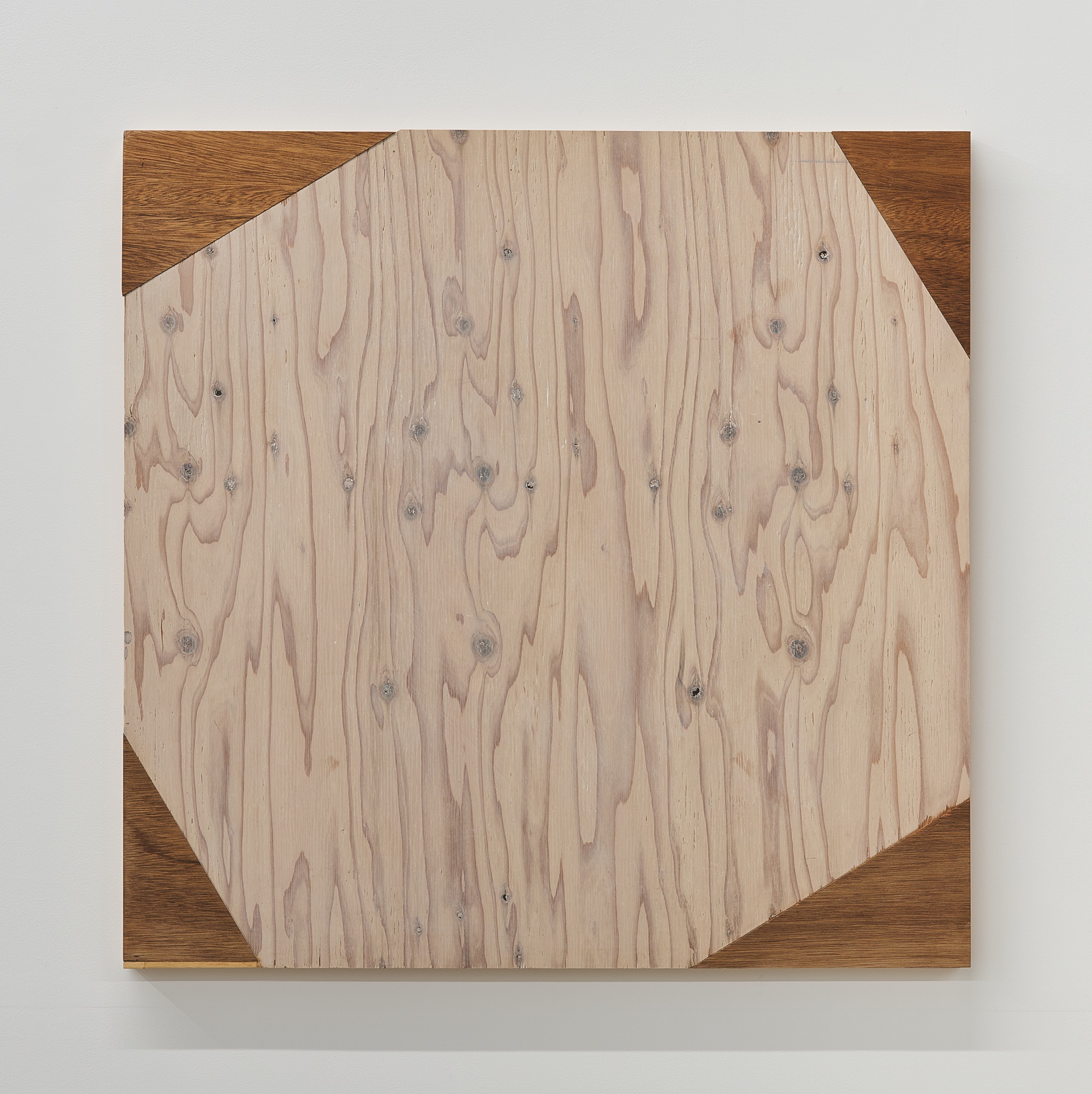
Eoarchean
2025
Natural paint, wood
91 x 91 x 4 cm
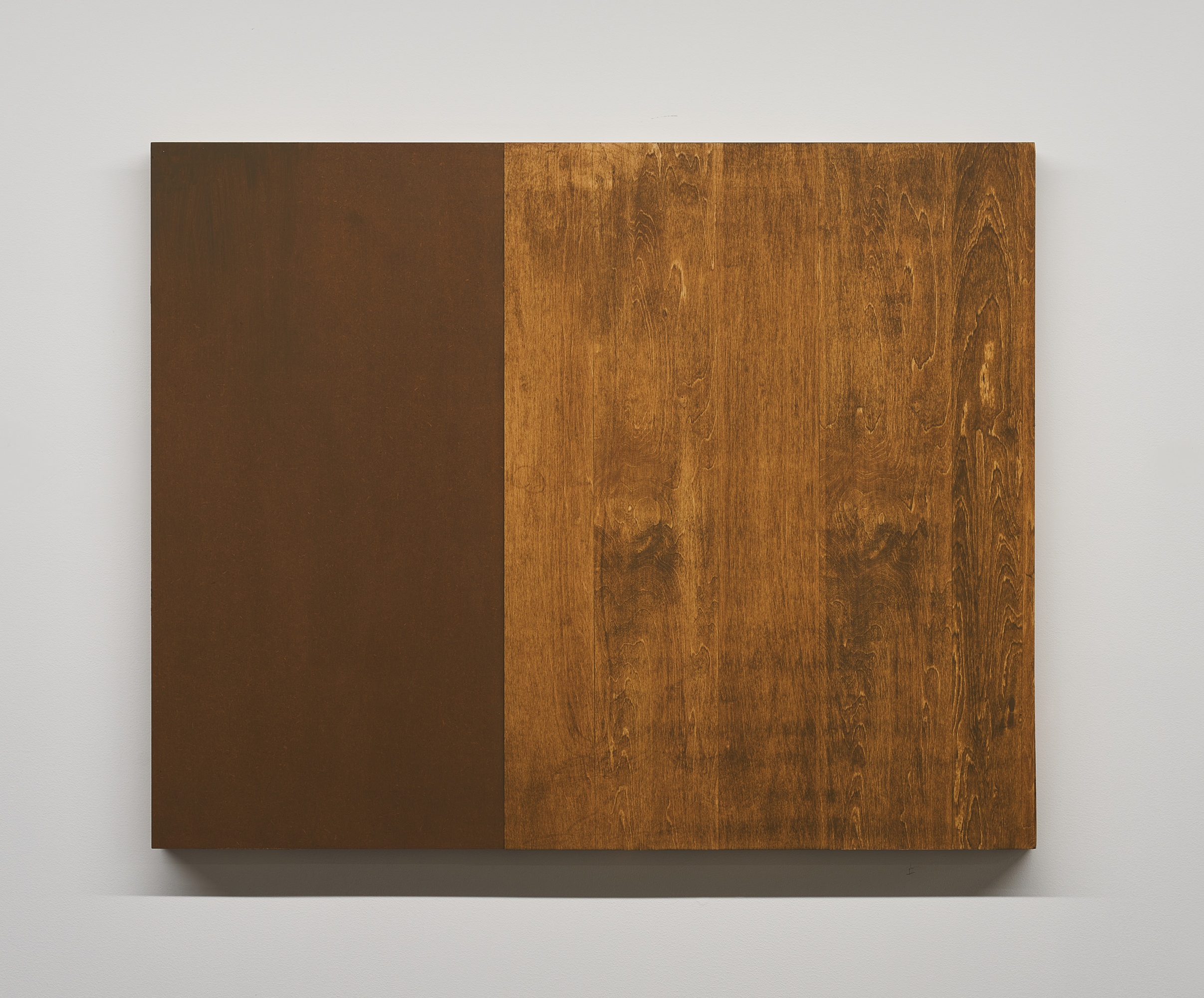
Rhyacian
2025
Natural paint, wood
75 x 60 x 4 cm
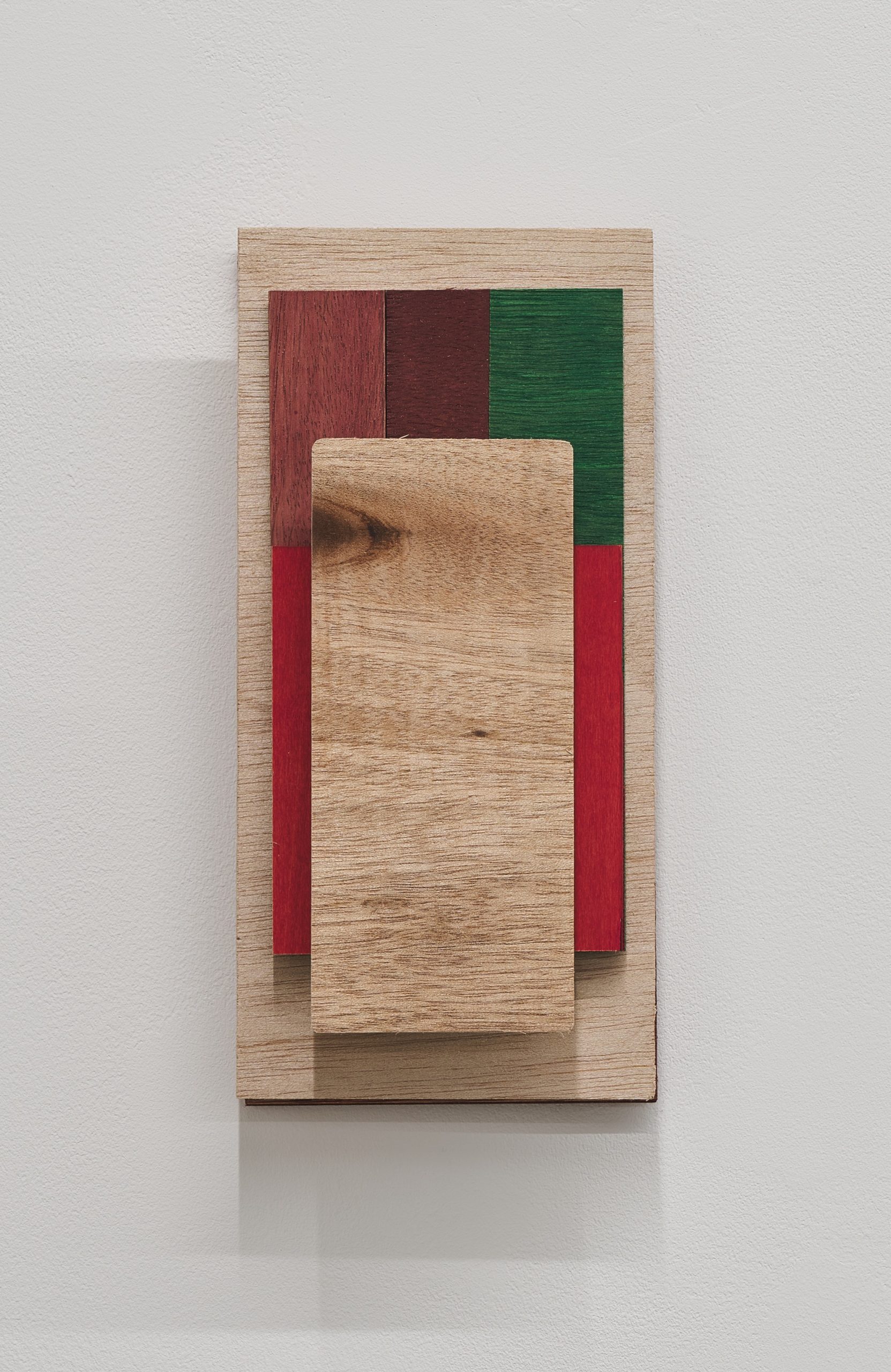
Saturn
2024
Natural paint, wood
22.9 x 11.1 x 5.2 cm
Things and Origination—Yasuko Toyoshima’s Geological Age
Ryo Katsumata (Art Critic)
Geological ages are a series of labels used to demarcate transitions of historical geological events based on the rock and fossil distribution revealed by strata. Toyoshima references this concept as the clue to her new series, Geological Age, which serves as this exhibition’s focus. The series is positioned as a development of its precursor, Quadrilateral. Both series consist of plywood—a material made of multiple layers—and may be metaphorically linked to accumulated strata. However, unlike Quadrilateral, in which the artist carves into the material as if to excavate the earth, in Geological Age, she combines multiple wooden pieces on panel faces like a jigsaw puzzle. As a result, the new series focuses on the painting-like surfaces of the support medium, rather than the thickness accumulated like a geological formation.
Nevertheless, the new pieces can be associated with geological ages because the concept expresses not only the earth’s physical and spatial composition but also the temporal processes of the Earth’s activities. Cataloging geological ages is essentially an act of naming to describe the relationship between the old and the new. It is also a system that, by employing linguistic labels (symbols), divides and gives an identifiable framework to the planet’s history extending to times before the emergence of humanity—the very acquirer of the language—to support our cognition. In short, it is a process of bestowing a language to things.
In Geological Age, Toyoshima uses this chronology-constructing method to label and efficiently manage individual artworks belonging to the series. In the past, she has attempted to assign existing systematic labels as individual work titles, such as the typhoon names in the Copernican Theory series. As mentioned above, however, the new series emphasizes the arrangement of painting-like surfaces containing hard-edged geometrical shapes, wood grain resembling traces of dripped paint, scratch-like textures, and coats of colors permeating into the surfaces as if to enhance these characteristics.
Such textures often manifest paintings as the object of fetishistic desire. In some cases, the context and system behind the production and circulation of artworks are considered secondary, while the judging of good or bad based on the direct enjoyment of the things becomes the primary method of art appreciation. Toyoshima’s works, too, possess a certain “flavor.” However, it is also evident that those things cannot escape a language or system. In other words, Geological Age does not hide the circumstances in which artwork production—“origination” in Toyoshima’s unique vocabulary—closely relates to the granting of symbols contributing to the management and circulation of the works. The formation of Geological Age is imbued by critical tension brought about by the history of the artist who studied painting before conceiving her own conceptual approach to challenge the social systems surrounding us.

